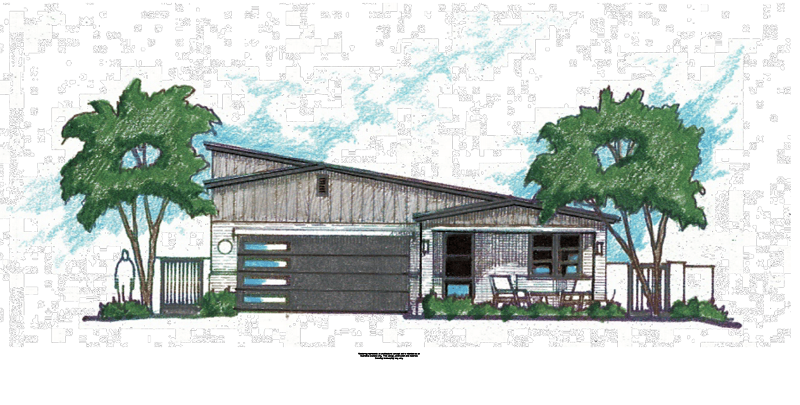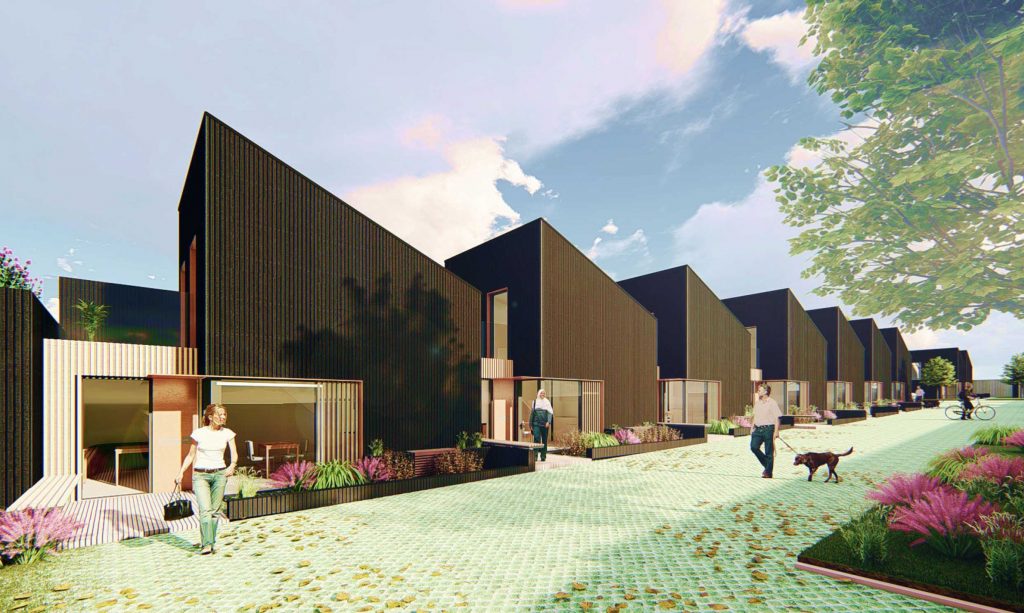
Photo: Habitat for Humanity
Tempe injects 3D printing into the affordable housing mix
16 June 2021
by Sarah Wray
The City of Tempe in Arizona is exploring how 3D printing could help to meet its affordable housing needs.
A 3D-printed single-storey, three-bedroom home is being built by non-profit Habitat for Humanity Central Arizona on a lot purchased by the city for affordable housing. The organisation says the approach could deliver more energy-efficient homes cheaper, faster and with less waste.
Tempe Mayor Corey Woods said the project aligns with the city’s Affordable Housing Strategy and could serve as a model to other cities facing an affordability crisis.
He told Cities Today: “It’s imperative that we look for innovative solutions like this 3D-printed house, as well as partnerships with non-profits and developers and funding streams that we can leverage to accelerate the growth of affordable housing. This project is the culmination of all of those things happening.”
“Addressing affordable housing needs isn’t about one particular project, partnership or purchase,” he said. “It’s about a combination of efforts that build on each other, and occur over time, that can allow cities like ours to increase the availability of affordable and workforce housing instead of solely relying on the market.”
Costs
Approximately 70 percent of the house will be 3D-printed, including all internal and external walls. The remainder is a traditional build. The property will be 2,433 square feet in total, with 1,738 square feet of liveable space.
On how the financial model could stack up, Jason Barlow, President and CEO of Habitat for Humanity Central Arizona, said costs have not yet been totalled because many of the materials – from the slab to the lighting – have been donated by partners.
“We knew going in that this initial 3D-printed home would be more expensive than our traditional builds. It is very much like a working prototype,” he commented. “But we are confident this technology holds the promise for reducing costs, the time to build and the waste associated with a traditional stick-built home.”
Barlow believes the initiative can help “change the conversation” about what’s possible in the affordable housing space and spur discussions to further refine the process.
Habitat for Humanity Central Arizona and the City of Tempe have worked together for more than 30 years. Other current projects include building 15 traditional homes on four city lots.
The 3D-printed home is expected to be ready for a family to move into by October.
The build is using a 3D printer which was shipped over from Germany-based company PERI. In 2020, PERI built the first 3D-printed house in Germany followed by the first 3D-printed apartment building in Europe.
Other partners include Cox Communications, Lowe’s, 3D Construction, Candelaria Design and The Ramsey Social Justice Foundation.
Housing innovation
Cities such as Austin are also exploring 3D printing to provide housing for the homeless. At the higher end of the market, developer Palari Group and construction technology company Mighty Buildings announced in March that they are building 15 3D-printed ‘net zero energy’ homes in Rancho Mirage, California.
Bristol in the UK is considering new ‘gap homes’ built on old garage sites to address housing affordability. The microhomes would be made off site and dropped into place. A consultation on the first proposed site has been launched.









